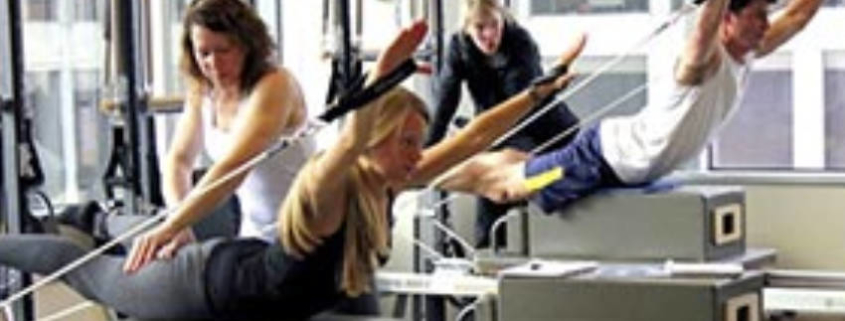Sort yourself out today…Shoulder pain
Muscle Left Behind – Muscle Imbalance. To get a strong and sculpt a sleek silhouette, you have to identify which muscles are slacking and whip them into shape.
Nearly every muscle in your body has a corresponding muscle group that carries out the opposite function. Take your biceps and triceps: their even match-up lets you bend and straighten your elbow without any thought. That’s how it should work, at least. Unfortunately, everyday habits (like sitting at a desk), repetitive workouts (say, that marathon you’re training for, or your weekly abs class) and even your wardrobe (yes your skyscraper heels) threaten these partnerships.
The result:one of the muscles becomes stronger and overpowers the other, a common condition known as muscular imbalance, which can worsen poor posture and wreak havoc on your figure, says trainer Melissa Paris. (tight hip flexors, for example, can tilt your hips forward and give you a “boep”.) Correcting them , she adds, helps elongate your silhouette and can actually make you look slimmer.
Chain reaction
Muscles, ligaments, tendons and bones are all connected through an intricate system , known to trainers and doctors as the kinetic chain. When one link in the chain is dodgy, it starts a reaction through the rest of your body. So your back pain could actually stem from a problem with your shoulder, your knee or even your shin. As with any team, when one muscle’s not keeping up, others have to work harder to compensate. “The danger of muscular imbalances is that they alter your natural movement patterns,” cautions personal trainer Karen Joseph. “Over time, they can pull your bones and joints out of alignment, which often leads to pain and injury.” The result, says Cape Town -based osteopath Guy Ashburner, could range from headaches, jaw problems, neck pain and shoulder tension now to osteoarthritis in the long term.
According to Ashburner, poor posture is a major culprit: “Some muscles shorten and tighten, while opposing muscles lengthen and weaken. " Case in point:the forward-facing-head, slumped-spine, rounded-shoulder look typical of your average office worker can lead to overstretched back muscles and tightened chest, rib and ab muscles.
Strike the perfect balance
Knowing what imbalances you may have can help you ID what’s causing your pain, says Dr Jordan Metzl, author of The Athletes Book Of Home Remedies. “Even better spotting them early can mean preventing future injuries.” Take them self-tests, which focus on four common female imbalances. If an area is out of whack, work our fix into your total-body routine at least three times a week.
Chest vs back
A balanced upper body helps you stand taller, look leaner and stave off shoulder and back pain. But many women tend to neglect their upper back muscles, says Ashburner. Combined with spending hours hunched over a keyboard, it can cause what experts call a protracted shoulder girdle (what you know as rounded shoulders and slouched posture). It’s a sign that the muscles in the front of your body are tight, while your back muscles are weak.
Calves vs shins
Strong shin muscles may not get you noticed in short shorts, but neglecting them is a big mistake. This small muscle is critical for controlling your foot landing. When it’s weak, your calf muscles must absorb the extra shock, which can lead to shin splints. Wearing high heels makes it worse: they keep your feet flexed, which weakens your shins and can shorten your calf muscles.
Quadriceps vs hamstrings
Biologically, women are more likely to be quad dominant (meaning they use their quads more than their hamstrings) than men are, says performance coach Mark Verstegen. “Wider hips throw off lower-body alignment and make it difficult for the posterior muscles, like your hamstrings, to work properly.” Striking a more even balance can lower your risk for injury, as well as increase your running speed and overall power.
Glutes vs hip flexors
Your glute muscles are the powerhouse of your lower half, plus they help stabilise your hips and pelvis to keep your spine properly aligned. Yet most people don’t train them enough,says Metzl. What’s more, a lifestyle that involves prolonged sitting simply never activates your glutes, says Ashburner. That places strain on your hip flexors, which over time become short and tight, pulling your hips out of alignment and leading to a host of injuries.
Warning
These Moves Could Be Bad for Your Health
Osteopath Guy Ashburner identifies three things you do in the gym that could be creating muscular imbalances in your body.
1 ISOLATED TRAINING MOVEMENTS
The body works most efficiently as a unit, so when you start trying to train muscles in isolation, you’re opening the door for niggles to creep in. Rather opt for moves that mimic natural movements and recruit multiple muscles, such as deadlifts rather than lateral thigh raises. Rule of thumb: if an exercise feels unnatural, it probably isn’t doing you any favours.
2 ENDLESS CRUNCHES
Sitting with slumped posture already shortens your abdominal muscles and fascia, and doing lots of crunches shortens them even further. Instead, place your hands behind your head, resting your mid-back on a Bosu ball with your trunk and shoulders in a horizontal position. Drop your shoulders to a decline but never rise above horizontal. This will help lengthen short abdominals.
3 BEING CONSCIOUS OF YOUR BUM
Exercises that encorage tucking your tailbone under the pelvis (like plies in ballet) are unnatural, working against the curves of your spine. Instead, focus on compound movements, such as freestanding squats (not using a ball or Smith machine) – and ensure you stick your glutes out behind you.
View a list of common complains that Osteopathy can assist with
Discovery the benefits of Osteopathy
- What is Osteopathy?
- Adult health issues
- Babies and Children
- During and after pregnancy
- Common Complaints
- Testimonials
- Sports Injuries
- Genral Osteopathy FAQs
- The Science & Reasearch



